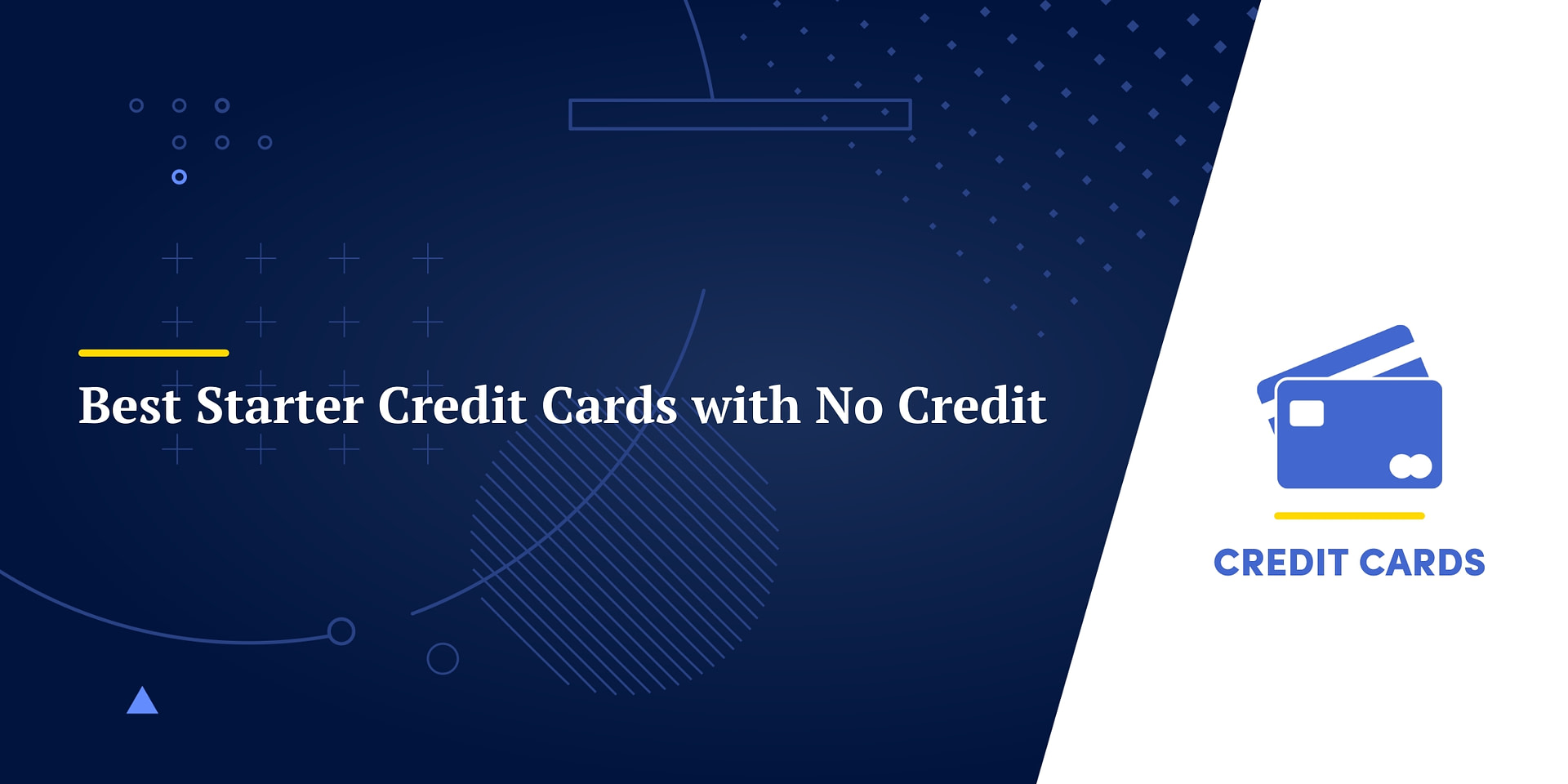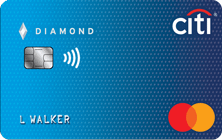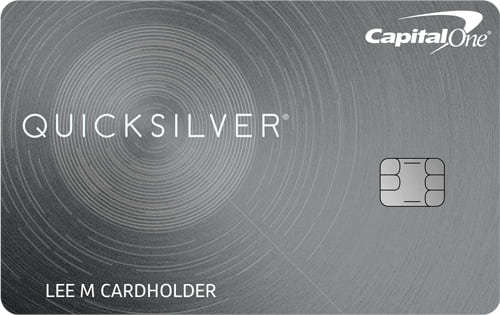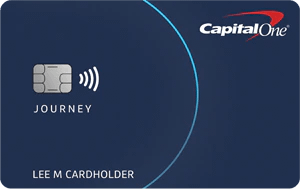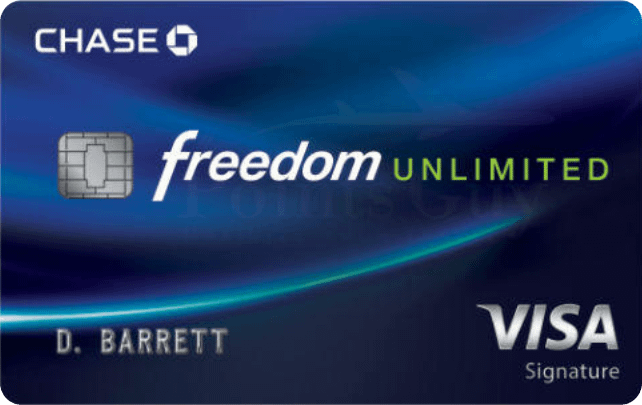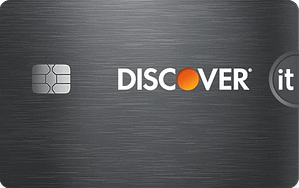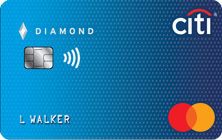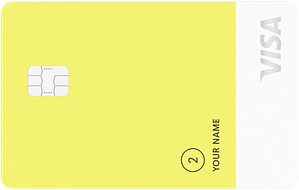Getting starter credit cards for no credit can be something of a chicken-and-egg problem. If you have damaged credit or no credit score at all, lenders will be wary about lending to you. However, you won’t be able to build a credit history unless you get a credit card first.
That’s why it’s important to get a card that you can use to start building a positive credit history. There are many different cards that are designed for people new to credit or for people who need to build their credit scores. Here are some of the best starter options.
Best Starter Credit Cards for People with No Credit
These are the best starter credit cards for no credit
BEST SECURED CARD
Discover It Secured
Summary: With a low minimum deposit and the chance to earn cash-back rewards, the Discover It card is one of the best secured card options out there. Learn more
BEST SECURED CARD ON MASTER CARD NETWORK
Citi Secured
Summary: Discover isn’t as widely accepted as MasterCard, so if you’re worried about being able to use your card at stores that don’t take Discover, Citi’s Secured card is a good alternative. Learn more
BEST FOR AUTOMATIC CREDIT LIMIT INCREASES
Capital One Quicksilver Secured
Summary: This card offers cash-back rewards and gives an automatic credit limit boost after six monthly payments, making it great for people who want a higher limit so they can use their card regularly. Learn more
BEST FOR NO CREDIT CHECK
Petal 2 Visa
Summary: Petal evaluates your creditworthiness based on your income, savings, and spending history, not your credit score. This makes it a great choice for people with solid finances who have no credit score. Learn more
BEST REWARDS CARD WITH BONUS CATEGORIES
Capital One SavorOne Student
Summary: This card offers bonus rewards on things students spend a lot on: dining, entertainment, streaming, and groceries, helping you save some money. Learn more
BEST FLAT-RATE REWARDS CARD
Capital One Journey Student Rewards
Summary: This card offers a simple 1.25% back on everything as long as you make timely payments. It’s also great for travel because it has no foreign transaction fee. Learn more
BEST FOR EASY BONUSES
Chase Freedom Student
Summary: This card offers an automatic credit limit increase and easy cash rewards. You’ll get $50 after one purchase and $20 every year (for five years) if your account is in good standing. Learn more
1. Discover It Secured Card
The Discover It Secured card is one of the best secured credit cards that can serve as a starter credit card for no credit.
It is somewhat unusual among secured credit cards in that it offers cash back and a signup bonus. You’ll earn 2% on your first $1,000 in spending at restaurants and gas stations each quarter and 1% everywhere else. Plus, as a bonus, Discover will double your rewards earnings for the first year.
The card has no annual fee and requires a deposit of just $200, making it relatively easy for anyone to open. It also lets you automatically graduate to an unsecured card once you’ve established a credit history. You can track your progress thanks to the free FICO score that cardholders receive each month.
Keep in mind that your credit limit will equal the deposit you make, so you might need to watch your spending carefully to make sure you don’t try to go past the limit.
| Discover It Secured Fast Facts | |
|---|---|
| Card Type | Secured |
| Fees | No annual fee |
| APR | 22.99% (Variable) |
| Initial Credit Limit | $200 – $2,500 |
| Rewards | Yes |

- Rewards
- Convertible to an unsecured card
- Intro bonus
- Free FICO score
2. Citi Secured Card
If the Discover It Secured doesn’t seem like the right choice for you, the Citi Secured card might be a good alternative. Like Discover’s offering, it has no annual fee and a minimum deposit of just $200, which makes it a cheap way to start building credit.
Like Discover’s option, the Citi Secured card gives you free access to your credit score each month and will upgrade you to an unsecured card after you’ve built a positive credit history.
However, Citi’s secured card does not have any cash-back rewards, which means you won’t earn money when you use the card to make purchases. It also has high penalties if you miss payments or make late payments. That means that you’re more likely to want to apply for a new rewards card once you’ve built some credit rather than keep this one as your everyday spender for the long term.
| Citi Secured Fast Facts | |
|---|---|
| Card Type | Secured |
| Fees | No annual fee |
| APR | 22.49% (Variable) |
| Initial Credit Limit | $200 – $2,500 |
| Rewards | No |

- Convertible to an unsecured card
- Free FICO score

- No rewards
- High fees for late payments
3. Capital One Quicksilver Secured Card
Capital One’s Quicksilver secured credit card is another of the few that offers cash-back rewards to cardholders. Unlike Discover, which offers elevated rewards for certain types of spending, Capital One keeps things simple with 1.5% cash back on everything you purchase, with no limits.
When you apply for the card and get approved, you’ll have to make a minimum deposit of $200, though you can deposit more to increase your initial credit limit. Capital One offers an automatic credit limit increase after six on-time monthly payments, and you can eventually graduate to the unsecured version of the Quicksilver card.
One drawback of the card is that Capital One states that you need fair credit, meaning a score of 580 to 669 or better to qualify. However, it also says borrowers with limited credit are eligible. That means if you have nothing in your credit report, you may or not be able to get this card.
The card also has an incredibly high APR, making it very costly to carry a balance.
* Your maximum credit limit will range between $1,000 and $3,000 based on your creditworthiness
| Capital One Quicksilver Secured Fast Facts | |
|---|---|
| Card Type | Secured |
| Fees | No annual fee |
| APR | 28.49% (Variable) |
| Initial Credit Limit | $200 – $1,000/$3,000* |
| Rewards | Yes |

- Cash back rewards
- Automatic credit limit increase
- Convertible to an unsecured card
4. Petal 2 Visa
The Petal 2 Visa card is an unsecured card – there’s no deposit – that is available to people with no credit score. It also offers rewards: 1% cash back immediately and up to 1.5% if you make on-time payments. You’ll get 2% to 10% bonus cash back at selected merchants.
Instead of using your credit score to evaluate your creditworthiness, Petal assigns you a “cash score” based on your income, savings, and cash flow. This makes it a great choice for financially responsible people with thin credit files or no credit score.
If your credit score is badly impaired or your bank record indicates that you’re in financial trouble, you may not be approved for this card.
If your cash score is good enough, Petal will approve a credit limit of up to $10,000, much higher than almost any other starter credit card.
If you’re in good financial condition, but you haven’t built a credit record, this will be one of your top choices.
| Petal 2 Fast Facts | |
|---|---|
| Card Type | Unsecured |
| Fees | No annual fee |
| APR | 16.74% – 29.99% (Variable) |
| Initial Credit Limit | $300 – $10,000 |
| Rewards | Yes |

- No credit check or security deposit
- No annual fee
- Cash-back rewards
- Potentially higher credit limits

- Approval may be difficult
- High APR
5. Capital One SavorOne Student Card
Student credit cards are a special type of card designed for people attending college. Card issuers understand that college students are unlikely to have significant credit histories but are also likely to be good borrowers who can afford to repay their debts. They offer student cards to help students pay for living expenses and start building credit.
The SavorOne Student Card offers cash-back rewards in the areas where students spend a lot of money, paying 3% on dining, entertainment, streaming, and groceries and 1% everywhere else. New card members can also get a $100 sign-up bonus when they spend $100 within three months of getting the card.
If you’re considering a study abroad, this card does not charge for foreign transactions, making it even more appealing for students.
The obvious drawback of the card is that it’s only available to students at higher education institutions. Like most Capital One cards, it also carries a high interest rate.
| SavorOne Student Fast Facts | |
|---|---|
| Card Type | Unsecured |
| Fees | No annual fee |
| APR | 17.99% – 27.99% |
| Initial Credit Limit | Not Disclosed |
| Rewards | Yes |

- Cash back rewards
- No foreign transaction fees
- Sign up bonus

- Exclusively for students
- High APR
6. Journey Student Rewards from Capital One
An alternative to the SavorOne, the Journey Student Rewards card simplifies things by offering a flat rate of cash-back rewards. You’ll earn 1% on everything you buy, plus a 0.25% bonus for making timely payments for a total cashback rate of 1.25%.
Like Capital One’s other student card, the Journey has no foreign transaction fee and makes it easy to track your credit score with Capital One’s CreditWise. However, it carries a high APR, making it a bad choice if you’re going to wind up carrying a balance.
Choosing between this card and the SavorOne largely relies on where you spend the most money. If you can take advantage of SavorOne’s bonus categories, you’ll earn more. However, if you don’t spend much on dining, entertainment, or groceries, this card’s higher base rate will earn you more.
| Journey Student Rewards Fast Facts | |
|---|---|
| Card Type | Unsecured |
| Fees | No annual fee |
| APR | 28.49% (Variable) |
| Initial Credit Limit | Not Disclosed |
| Rewards | Yes |

- Cash back rewards
- No foreign transaction fees

- Exclusively for students
- High APR
7. Chase Freedom Student Card
Another student credit card option is the Chase Freedom Student card. Like other student cards, this is only available if you’re studying at a higher education institution, but if you qualify, it has some nice perks.
Students can get 1% cash back on everything they purchase, with no limits. You’ll also get a $50 bonus after making a single purchase within the first three months of having the card. There’s also a $20 “good standing” reward that you’ll get every year for the first five years so long as you’re not in default on your account anniversary each year.
Cardholders can track their credit score with free monthly FICO scores and get an automatic credit limit increase after making five timely payments.
The main drawback of the card is that other options, like the SavorOne student card, may offer higher reward rates.
| Chase Freedom Student Fast Facts | |
|---|---|
| Card Type | Unsecured |
| Fees | No annual fee |
| APR | 17.99% (Variable) |
| Initial Credit Limit | Not Disclosed |
| Rewards | Yes |

- Cash back rewards
- Sign up and annual bonus
- Automatic credit limit increase
- Free credit score

- Lower rewards than other options
- Exclusively for students
Compare Starter Credit Cards
Here’s a head-to-head comparison of the starter cards.
| Card | Card Type | Annual Fee | APR | Initial credit limit | Rewards |
|---|---|---|---|---|---|
| Discover It Secured | Secured | $0 | 22.99% (Variable) | $200 – $2,500 | Yes |
| Citi Secured | Secured | $0 | 22.49% (Variable) | $200 – $2,500 | No |
| Capital One Quicksilver Secured | Secured | $0 | 28.49% (Variable) | $200 – $1,000/$3,000* | Yes |
| Petal 2 Visa | Unsecured | $0 | 16.74% – 29.99% (Variable) | $300 – $10,000 | Yes |
| Capital One SavorOne Student | Unsecured | $0 | 17.99% – 27.99% | Not Disclosed | Yes |
| Capital One Journey Student Rewards | Unsecured | $0 | 28.49% (Variable) | Not Disclosed | Yes |
| Chase Freedom Student | Unsecured | $0 | 17.99% (Variable) | Not Disclosed | Yes |
* Your maximum credit limit will range between $1,000 and $3,000 based on your creditworthiness
How to Choose a Starter Credit Card
Choosing a credit card can be difficult in the best of times. Adding in the fact that you’re starting with no credit score makes it even more complicated. Some of the factors to consider include the following:
- Credit requirements. Given that you have no credit, you’ll be looking for cards that don’t have strict credit requirements. You might want to go for specialized types of cards, like student cards or secured cards, which are designed for people without credit.
- Fees. Some card issuers charge annual fees or charge for foreign transactions and other services. You want to look for cards with low or no fees.
- Interest rates. Ideally, you’ll never carry a balance and won’t pay interest on your credit cards, but life sometimes has other plans. Look for cards that have low interest rates just in case you wind up carrying a balance.
- Credit limits. If you have no credit, most lenders will give you a very small credit limit. In some cases, it could be just a few hundred dollars. It’s easy to hit a limit that low, so look for cards with higher limits or that raise your limit over time.
- Rewards. While it’s less common for cards designed for those with no credit, if you can find a card that offers cash back or other rewards, you can save some money.
Remember that most secured cards and student cards have very low credit limits. You’ll want to keep your credit utilization low to help you build credit, so you will have to maintain a low balance. That places a hard limit on the rewards you can receive, so you probably won’t want to make rewards a key element in your decision.

